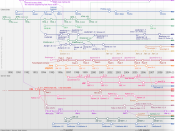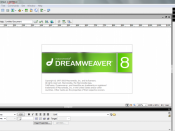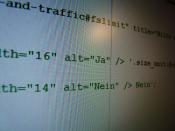HTML
HTML stands for HyperText Markup Language. It is essentially a collection of codes and normal text that are placed into a file which is then "read" by a browser, such as Netscape, Internet Explorer, Mozilla, Opera, etc. The codes tell the browser how the content of the page is to be displayed: not only with respect to font size and colour but also to layout and page structure. HTML is a standard promoted by the W3C. Version 4.0 of the standard is now out. In the meantime, dynamic HTML is gaining in popularity and you should apply yourself to XHTML (Extensible HyperText Markup Language) if you want to be "in." As well as the different browsers there are differences in the have to do is to indicate the full name of the file (i.e., with extension). The code for will look like this:
"N.B.: if you want *.gif
or *.jpg" files to be downloaded you have to give these another extension, as otherwise the browser will erroneously assume that the image is to open when the link is clicked. You can for example make the image into a zip file.
Your webpage can be read more easily if you use horizontal dividing lines. This makes separate sections of your pages stand out more. You can insert a horizontal line by using the tag. By default, this line is 1 pixel "thick" and spans the entire page width.
HTML Standards and XML
The Hypertext Markup Language (HTML) is a simple markup language used to create hypertext documents that are portable from one platform to another. HTML documents are SGML documents with generic semantics that are appropriate for representing information from a wide range of applications. HTML can be created and processed by a wide range of tools, from simple...



Web Design
For an explanation in Web Design I find this cut very short.
0 out of 0 people found this comment useful.